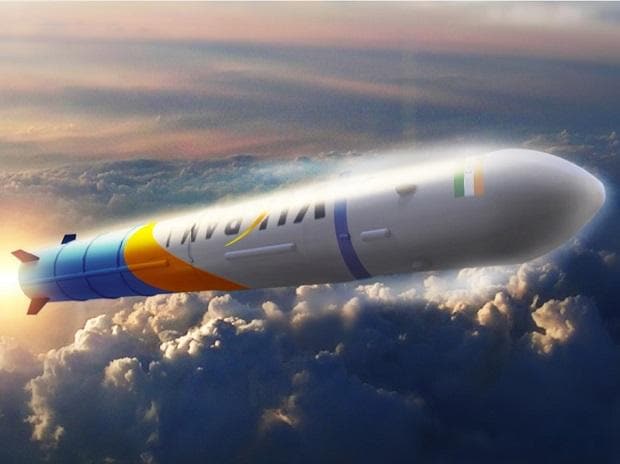India on Friday entered a new era in the space sector when private company Skyroot Aerospace successfully launching its Vikram-S rocket on a sub-orbital flight from the Satish Dhawan Space Centre in Sriharikota.
The Prarambh mission is important as it was for the first time in India that a privately developed and operated launch vehicle from the country was launched. At around 11.30 am on Friday, in front of a packed audience in the gallery of the space centre and thousands watching online globally, Skyroot registered history. India had opened the space sector for private players in 2020, allowing them to build rockets and satellites. Within 80 seconds after its launch, it was announced that the flight had achieved hypersonic velocity and after 155 seconds it met the peak altitude of 89.5 km.
The 6-metre rocket’s mission was marked a success when it successfully crossed 50 km altitude. A normal passenger vehicle goes up to 10 km. “I am happy to announce the successful completion of mission Prarambh. The rocket achieved an altitude of 89.5 km. All systems worked as per plan. Today is a milestone for the country. It became possible because of the space sector reforms announced in June 2020. ISRO and IN-SPACe (Indian National Space Promotion and Authorisation Centre) played an important role in this,” said businessman Pawan Goenka, who heads INSPACe, which has been set up by the government to coordinate between private space firms and state-owned space agency Indian Space Research Organisation (ISRO).
“This is a great milestone for all of us at Skyroot, and a path-breaking one as the pioneering launch mission of the Indian private sector. Our feeling is nothing short of exuberance. Next, our focus is developing our flagship Vikram I orbital vehicle that we would launch next year,” the company said in a statement.
The Vikram-S rocket aims to help validate 80 per cent of the technologies that will be used in the Vikram-1 orbital vehicle that is planned for launch next year. It carries with it three customer payloads, which has as their aim the measurement and validation of certain flight parameters and payload integration processes, the company said. Other than the launch support, the company has undertaken several testing processes within ISRO’s test facilities.
The Vikram-S rocket is a single-stage solid fuelled, sub-orbital rocket which has taken about two years to develop. It has been built using advanced technologies including carbon composite structures and 3D-printed components.
“As a key milestone which will help test and validate the majority of the technologies in the Vikram series of orbital class space launch vehicles, Vikram S is an important project. Close to 100 people have been involved in the project directly and indirectly,” said the company.
The Vikram-S will help test and validate the majority of the technologies in the Vikram series of orbital class space launch vehicles – Vikram I, Vikram II and Vikram III. There are many sub-systems and technologies that we will be testing across pre lift-off and post lift-off phases of this mission. One of the key areas that the company is monitoring closely would be the performance of its solid fuelled rocket engine “Kalaam -80”.
Skyroot said that it is targeting both commercial and government customers, with a focus on global clients. According to data by Dewesoft, there are around 4,550 man-made satellites in Earth’s orbit — including 3,790 in lower orbit, 139 in medium orbit, 56 in highly elliptical orbit and 565 in geostationary orbit. Based on the current roadmap, at least 50,000 more satellites are expected to be launched in the next 10 years, majority of which will be for the lower orbit, indicating the potential of Skyroot’s launch.
Skyroot is one of the most funded start-ups in the space sector in India, having raised about $68 million so far. Other than Skyroot, Chennai-based Agnikul Cosmos is also planning a full-scale commercial launch of their rocket Agnibaan by April 2023.
Note:- (Not all news on the site expresses the point of view of the site, but we transmit this news automatically and translate it through programmatic technology on the site and not from a human editor. The content is auto-generated from a syndicated feed.))




Great delivery. Sound arguments. Keep up the good effort.
May I just say what a relief to find a person that actually understands what
they’re talking about on the web. You certainly realize
how to bring a problem to light and make it important.
More people ought to check this out and understand this side of your story.
It’s surprising you are not more popular since you certainly possess the gift.
Hello everyone, it’s my first visit at this site, and paragraph is actually fruitful
in support of me, keep up posting such posts.
Hello there! I know this is somewhat off topic but I was wondering which blog
platform are you using for this site? I’m getting
fed up of WordPress because I’ve had issues with hackers and I’m
looking at alternatives for another platform. I would be fantastic if you could point me
in the direction of a good platform.